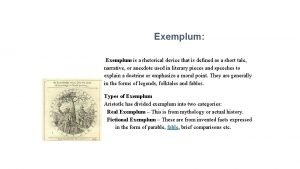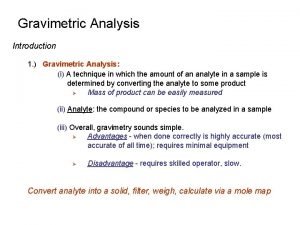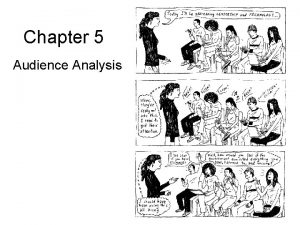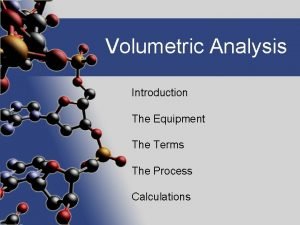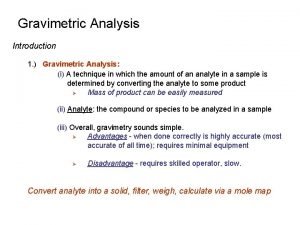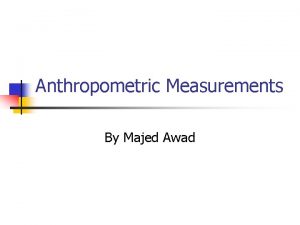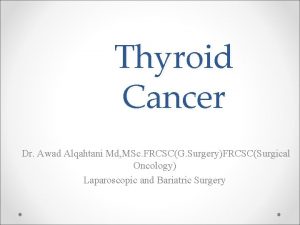Introduction to CostUtility Analysis Awad MATARIA Ph D
























- Slides: 24

Introduction to Cost-Utility Analysis Awad MATARIA, Ph. D Health Economist HEC/DHS/WHO-EMRO Introduction to Economic Evaluation with Special Application to NCDs Cairo-Egypt, 16 -18 December 2012

Introduction Full economic evaluation. Output valuation. Final output and general: not program specific. Incremental cost per QALY gained. Productivity changes and discounting. Valid output data (intermediate versus final). Quantity and quality: mortality and morbidity. Highlight the important role of consumer preferences in valuing outcomes.

Labeling: CEA versus CUA. Nomenclature: Generalized CEA, utility maximization, health status index. Multiple outcome, not only counted but also valued according to their desirability.

When to use CUA: HRQo. L is the important outcome; e. g. , arthritis. HRQo. L is an important outcome; e. g. , neonatal intensive care for very-low-birthweight infants. Morbidity and mortality; e. g. , cancer treatment. Wide comparisons.

When not to use CUA: Only intermediate outcomes. Equally Extra effective alternatives. cost for obtaining utility values is not cost -effective.

Utility, value, preferences Preference is the umbrella that describes the overall concept. Utilities and values are different types of preferences, what you get depends on how you measure (table).


Measuring preferences Three main instruments: Rating Scale. Standard Gamble (SG). Time-Trade Off (TTO).

Rating Scale (1) Simplest approach. Procedure: Rank health outcomes from most preferred to least preferred. Place the outcomes on an interval scale: equally desirable, very different in desirability & comparison of intervals rather than scores to produce interval scale of preferences. Not ratios but intervals.

Rating Scale (2) Rating scale (0, 100). Category scaling (0, 10 or 11). Visual analogue scale (VAS): 10 cm, with or without marks but clearly defined endpoints. “feeling thermometer”

Rating Scale (3) Preferences for chronic states and rating scale. Irreversible: same age of onset to death. Two additional chronic states are added: Healthy from age of onset to death. Death at age of onset. Select the best and worst health state in the batch, to place them on 0 -1 scale. If death = 0 then x is the preference value. Otherwise, preference value = (x-d)/(1 -d).

Rating Scale (4) Rating scale: Ordinal ranking. Intensity of preferences. Biases: Compared with SG or TTO, it is not interval. End-of-scale bias & spacing out bias. Conversion to SG or TTO using power curve conversion : convert after or warming up.

Standard Gamble (1) Third axiom of Von Neumann Morgenstern utility theory (1944). Preference score for state i for time t = p (figure). Utility scale: perfect health for t years = 1, death = 0. Visual aids for probabilities: e. g. , probability wheel.

Standard Gamble (2)

Time-Trade Off…. (1) Alternative to SG but score has to be adjusted to be used as VNM. hi = x/t. hi = 1 -(1 -hj)x/t. if hj=0 then hi = 1 -x/t.

Time-Trade Off…. (2)

Person-Trade Off Called “Equivalence” before. How many patients in the designated state of health should have their lives extended by one year in order to be equivalent to extending the lives of 100 healthy patients by one year? More suitable for resource allocation decisions.

Multi-attribute health status classification systems Pre-scored systems. Three main systems: Quality of Well-Being (QWB). Health Utilities Index (HUI). Euro. Qol (EQ-5 D).

MAU Theory Ex. , HUI 2: MAHSCS. 6 attributes: Sensation, mobility, emotion, cognition and selfcare, pain. Levels: 4 -5 from no to full impairment. First order: no interaction (synergism or antagonism). Mutual utility independence. Additive independence.

QWB & EQ-5 D QWB: EQ-5 D: 4 attributes: mobility, physical activity, social activity, symptom problem complex. Scoring function is based on category scaling measurement from the general population (values not utilities). 5 attributes: mobility, self care, usual activity, pain/discomfort, and anxiety/depression. 3 levels per attribute: no problem, some problem, major problem. 243 combinations + unconscious and death. Preferences scores are calculated using TTO.



QALY

THANK YOU
 Awad mataria
Awad mataria Khaled awad md
Khaled awad md Exemplum speech
Exemplum speech Body paragraph
Body paragraph Sad system analysis and design
Sad system analysis and design Introduction to nonlinear analysis
Introduction to nonlinear analysis Hunger games literary analysis essay
Hunger games literary analysis essay Introduction to poetry by billy collins analysis
Introduction to poetry by billy collins analysis Algorithm analysis examples
Algorithm analysis examples Types of gravimetric analysis
Types of gravimetric analysis Affiliation audience analysis
Affiliation audience analysis Introduction to factor analysis
Introduction to factor analysis How to write a character analysis essay
How to write a character analysis essay Volumetric analysis introduction
Volumetric analysis introduction Literary analysis introduction
Literary analysis introduction Speech analysis introduction
Speech analysis introduction Gravimetric analysis assignment
Gravimetric analysis assignment Neil gaiman intro to fahrenheit 451
Neil gaiman intro to fahrenheit 451 Job analysis in industrial psychology
Job analysis in industrial psychology Introduction to system analysis and design
Introduction to system analysis and design Introduction of design and analysis of algorithms
Introduction of design and analysis of algorithms Titration image
Titration image Macbeth analysis introduction
Macbeth analysis introduction Swot analysis introduction
Swot analysis introduction Modified rothera test
Modified rothera test


